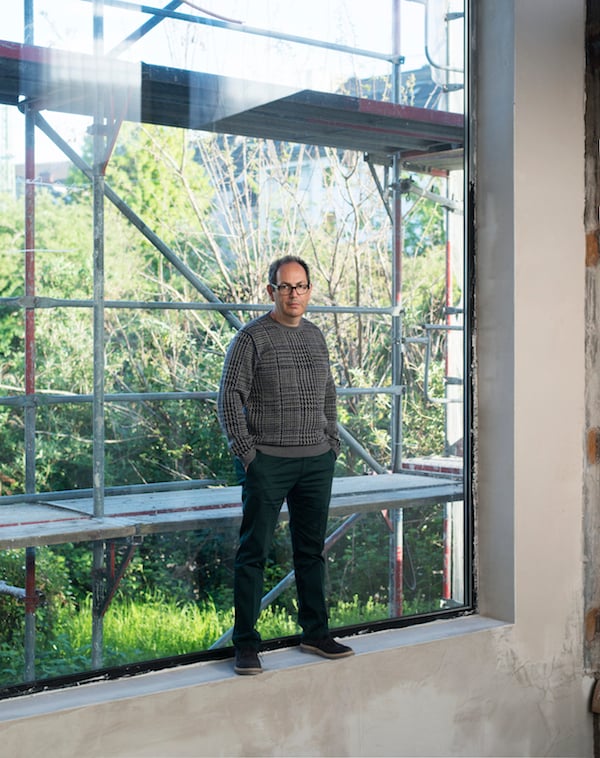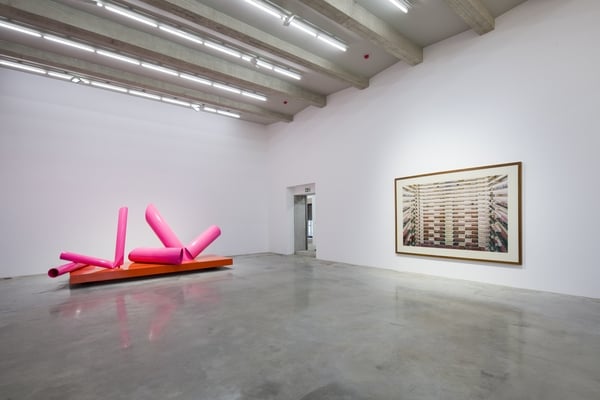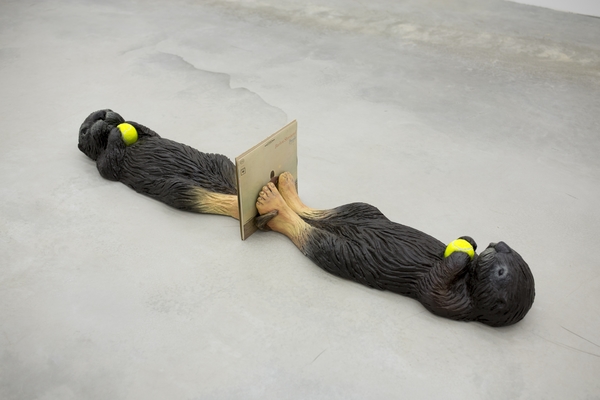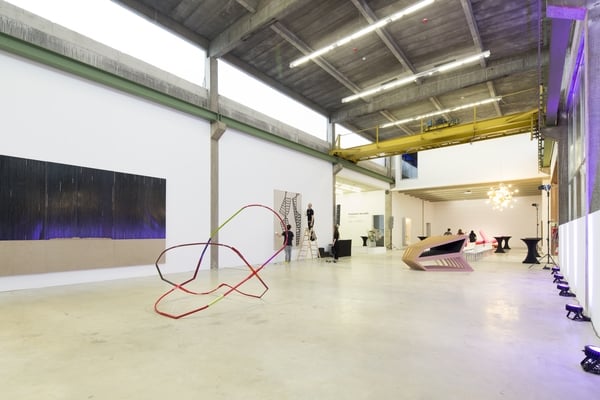People
Collector Gil Bronner on Why Düsseldorf Is the Best City for His Philara Collection (And Not Berlin)
The collector explains what he looks for in a work of art, and what's in store for the former glass factory.

The collector explains what he looks for in a work of art, and what's in store for the former glass factory.

Alyssa Buffenstein

The word “Philara” sounds like it could be derived from the Greek root “phil,” meaning “to love,” but the word, the name of the contemporary art collection of Düsseldorf-based real estate developer Gil Bronner, “is just a simple acronym,” explains the collector, based on the names of his two children.
The Philara Collection was recently re-staged at a new location in Düsseldorf, a former glass factory in the Flingern district, and celebrated its opening on June 26. The space will house a rotating exhibition of works from the Philara Collection, and temporary shows by single artists, the first of which is the German-born, Los Angeles-based Friedrich Kunath.
Bronner’s passion for art is obvious—when artnet News called him from Berlin to conduct this interview, he was in Milan, outside the Fondazione Prada. He complimented Rem Koolhaas’ renovation of the former gin distillery, and spoke highly of the Thomas Demand show currently on view. But the topic of the conversation was his own art collection. Read on to find out how Bronner has learned to look at art, why he thinks Düsseldorf is the most important city for art, and what makes the Philara Collection stand out.

David Renggli, Recining Nude (2014), and Andreas Gursky, Atlanta (1996). Photo by Susanne Diesner, courtesy of the artists and Sammlung Philara.
What makes the Philara Collection unique?
I think every collection is unique; however, I’m not your standard person who collects art; I don’t have any art advisors, I don’t have tons of money, and a lot of the work I collect is very young, from graduates of the Kunstakademie Düsseldorf. We show young positions alongside established ones, and we look for similarities in works that might be aesthetically very different.
Work by very young artists makes up about 10 to 15 percent of the entire collection, but a disproportionate amount of young, international positions are featured in the inaugural show. The collection also shows the positions of artists who are on their way to being established, like Leigh Ledare, who is famous for having taken pictures of his mother having sex with men. His work is heavily psychological, dealing with how power relations and sexuality affect the artist and viewer.
What’s special about Düsseldorf?
Düsseldorf and the surrounding area is really a hub of art. Compared to Berlin, we have so many more museums and art life, not to mention the academy. With all due respect to Berlin; it’s a great city, but it’s a tourist city. The galleries go there because so do the rich American tourists. Most major German art collectors are based in Düsseldorf, and our area is totally underappreciated for what it is. Look at Sigmar Polke, Gerhard Richter, or the Zero movement—nothing like that came out of Berlin. I consider Düsseldorf the most important art city in the world.

Friedrich Kunath, What Difference it Makes When It Doesn’t Make Any Difference Anymore (2013). Photo by Susanne Diesner, courtesy the artist and BQ, Berlin.
Your collection doesn’t have a tight theme like, for instance, fellow Düsseldorf collector Julia Stoschek’s focus on “time-based media art.” What draws you to a work of art, and how do you know when you “have to have it”?
I’ve been looking at art for the better part of 30 years, and after a while you get to know quality. I look for an intellect that emanates from the work, and I have to know it will interest me in the future. It needs to be aesthetically interesting, intellectually challenging, and ideally it should be typical of the artist’s work.
Who are some young artists you are particularly excited about right now?
There are of course many exceptionally talented young artists emerging all the time, but these are the ones that spring to mind: Silke Albrecht, a mainly abstract painter who graduated under Andreas Gursky, with an exceptional feeling for color and her very own language. Sabrina Fritsch is another exceptional abstract painter who won the art cologne emerging artist prize in 2015. Sebastian Riemer is a photographer who studied with Thomas Ruff.
Leunora Salihu is a graduate (and favorite) of Tony Cragg. Her work as a sculptress builds both on organic and constructed shapes using different materials, most recently clay. Andreas Schmitten, a further graduate of Tony Cragg, is a sculptor with an extremely personal language. Katja Tönissen is a sculptress and painter whose works are often reminiscent of the 1960s, always with dry humor and frequently with strong feminine sexual allusions.
And last but by no means least, Alexander Wissel, an artist in every sense, whose works range from painting to performance and film, has a seemingly endless fountain of ideas that are most often amazingly carried out. His October Bar is legendary; he subleased a totally incongruous (at least for the art scene) bar close to the main railway station and showed a different artist there every night.
How do you decide which works from your collection to display together?
I have a curator, a very clever young woman, and she keeps a very tight ship. If it were up to me I would show as much as I could possibly cram into the space. We save so much for later. We try to create a kind of body that connects the works in each room. One room, for example, is about repetition; another is based on the idea of time, the perfection of time, and what makes time—like a deconstructed clock by Alicja Kwade.

Installation view, Sammlung Philara. Photo by Susanne Diesner, courtesy Sammlung Philara.
How does the architecture of the former glass factory engage with the collection?
It doesn’t, really. I didn’t particularly look for this building, but I’m a real estate developer so it was more of a coincidence. The challenge with renovating the building was making sure it remained visibly an old industrial building, without that being the emphasis, but also not making it too much of a white cube.
You’ve spoken before about “spoton,” an event where a group of viewers focus on one work for two hours at a time. What other events will take place in your space?
My curator thought of the spoton. The average collector goes to Art Basel and sees thousands of works in two days. You spend literally seconds with works, and you learn to look quickly. If you look at old movies, people are looking at their favorite painting at the Louvre for 30 minutes at a time, that just doesn’t happen anymore. But, then again, how many paintings are there today whose aesthetic content you could analyze for thirty minutes? Today, you think more about the ideas.
We also want to screen films, do concerts, perhaps ballet. We’ll see, we have to get up and running first, some parts of the building are still under construction!